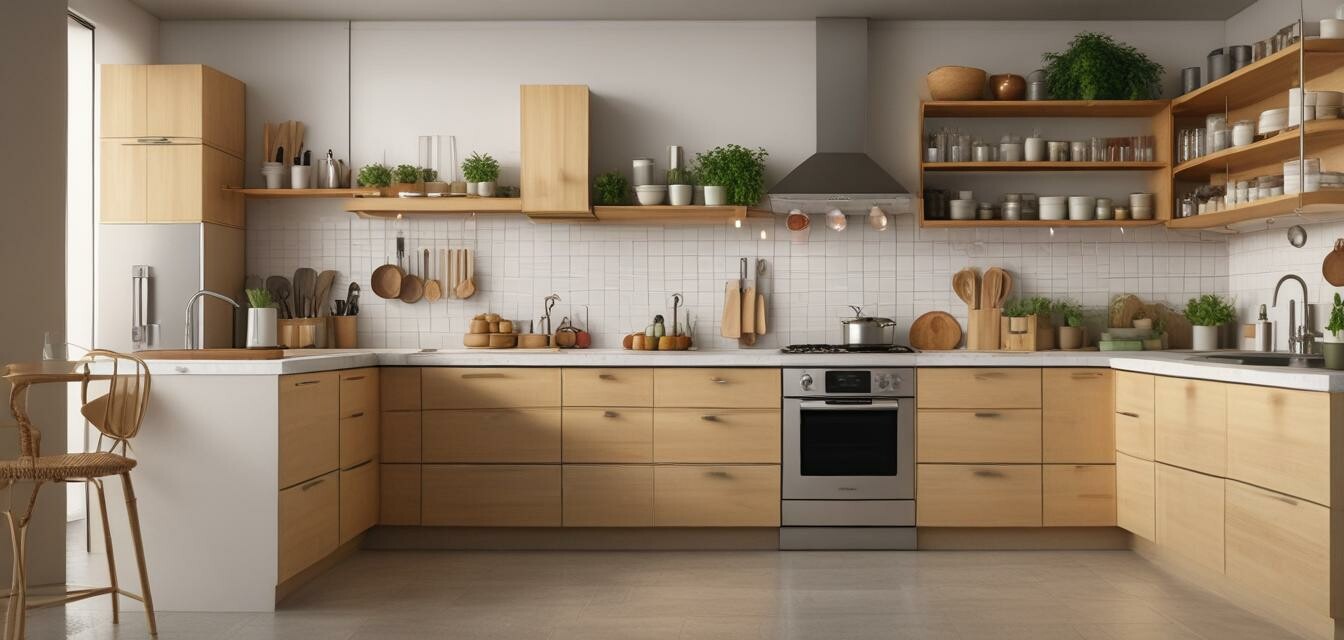
How to Organize an Eco-Friendly Kitchen
Key Takeaways
- Focus on sustainable storage solutions.
- Implement waste reduction habits.
- Choose eco-friendly kitchenware materials.
- Improve kitchen efficiency with smart organization.
- Utilize recycled or compostable kitchen tools.
Organizing a kitchen can seem overwhelming, but it doesn’t have to be. By focusing on sustainable solutions, you can create a space that not only promotes efficiency but also reduces your environmental impact. This guide will provide practical tips on how to organize your kitchen sustainably, including effective storage options and habits that help you reduce waste.
1. Sustainable Storage Solutions
One of the most effective ways to organize an eco-friendly kitchen is by selecting sustainable storage options. Below are some popular eco-friendly materials for kitchen storage:
| Material | Benefits |
|---|---|
| Bamboo | Highly renewable, lightweight, and durable. |
| Recycled glass | Reuses waste materials and easy to clean. |
| Stainless steel | Durable, recyclable, and resistant to rust. |
| Compostable materials | Break down easily, reducing landfill waste. |
Investing in Eco-Friendly Containers
When purchasing storage containers, consider options made from eco-friendly materials. Here are some ideas:
- Glass jars for pantry items like grains and spices
- Bamboo or recycled bins for organizing utensils and tools
- Compostable bags for food storage
2. Implementing Waste Reduction Habits
To maintain an eco-friendly kitchen, it's essential to develop habits that minimize waste. Here are some strategies:
- Practice mindful shopping: Always create a shopping list to avoid overbuying.
- Use reusable produce bags to eliminate plastic waste.
- Repurpose glass jars and containers for storage instead of buying new ones.
- Set up a composting station to recycle food scraps effectively.
3. Use of Reusable Kitchenware
Replacing disposable kitchen items with reusable alternatives can significantly reduce waste. Here are some options to consider:
- Reusable silicone bags for freezing and storing
- Produce bags for your grocery shopping
- Stainless steel utensils that last a lifetime
4. Organizing Your Kitchen for Efficiency
Efficient organization can save you time and make cooking a more enjoyable experience. Here are some tips:
Beginner's tips for kitchen organization:
- Group similar items together for easy access.
- Use clear containers to easily see contents.
- Label storage areas to streamline the cooking process.
- Keep frequently used items at eye level.
5. Enhance Your Kitchen with Eco-Friendly Appliances
Consider adding energy-efficient appliances to your kitchen for sustainability and lower utility bills. Here is a comparison table:
| Appliance | Energy-Efficient Option | Benefits |
|---|---|---|
| Refrigerator | Energy Star rated | Lower energy consumption |
| Dishwasher | Water-efficient models | Use less water per cycle |
| Stove | Induction cooktops | Cook faster while using less energy |
6. Conclusion
Organizing your kitchen sustainably doesn’t have to be complicated. By focusing on eco-friendly materials, reducing waste, and implementing efficient storage solutions, you can create a kitchen that is both practical and kind to the planet. Start small and gradually incorporate these practices into your routine for a more sustainable kitchen experience!
Pros
- Environmentally friendly practices
- Less waste generation
- More efficient cooking and cleaning
- Improved kitchen aesthetics
Cons
- Initial investment for eco-friendly products
- Time required to change habits
For more tips and information, explore our blog categories on buying guides or news and trends in eco-friendly kitchenware!



